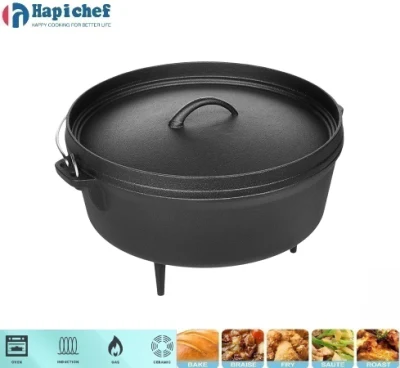cleaning cast iron skillets manufacturers
Cleaning Cast Iron Skillets A Guide for Manufacturers
Cast iron skillets are a staple in kitchens worldwide, celebrated for their durability, excellent heat retention, and ability to develop a natural non-stick surface over time. They are often passed down through generations, but to maintain their quality and lifespan, proper cleaning and care are essential. For manufacturers, understanding the cleaning process can inform product design, customer education, and warranty considerations.
Understanding the Material
Cast iron is an alloy of iron that is known for its robust nature. It can withstand high temperatures, making it ideal for a variety of cooking methods, from frying to baking. However, cast iron requires special attention to cleaning to preserve its seasoning—a layer of polymerized fat that protects the pan from rust and provides that coveted non-stick surface.
The Cleaning Process
1. Immediate Attention The best time to clean cast iron skillets is right after use. While the skillet is still warm, carefully wipe out excess food debris with a paper towel or a soft cloth. Avoid cold water at this stage, as it can cause warping.
2. Avoiding Soap There is a debate among chefs about using soap on cast iron; however, most manufacturers recommend against it. Soap can break down the seasoning layer. Instead, if there is stubborn food residue, use hot water—a small amount if necessary—along with a stiff bristle brush or a non-abrasive scrub pad. For exceptionally tough spots, consider pouring in coarse salt as an abrasive while scrubbing.
3. Rinsing and Drying Once cleaned, the skillet should be rinsed with warm water and dried immediately. Leaving moisture on cast iron can lead to rust. To ensure complete dryness, place the skillet on a low flame for a few minutes to evaporate any remaining water.
cleaning cast iron skillets manufacturers

4. Re-seasoning After cleaning, applying a thin layer of cooking oil to the surface helps maintain the seasoning and prevents rust. Using oils with high smoke points, such as flaxseed oil, vegetable oil, or shortening, is ideal. Heat the skillet on low for a few minutes and then let it cool, allowing the oil to bond with the iron.
Customer Education
Manufacturers play a crucial role in educating consumers on how to maintain their cast iron skillets. Including care instructions in the packaging or on the company website can help ensure that customers are using the skillet correctly from day one. Videos or step-by-step guides can also be beneficial, demonstrating the cleaning process to enhance user experience.
Common Pitfalls to Avoid
1. Soaking Never soak a cast iron skillet in water, as prolonged exposure can lead to rust. 2. Dishwashers Similar to soaking, dishwashers should be avoided to prevent damage to the seasoning and potential rusting. 3. Cooking Acidic Foods While it’s possible to cook with acidic ingredients occasionally, doing so frequently can strip the seasoning. Manufacturers might consider advising consumers to limit acidic foods in their cast iron skillets.
Conclusion
Cleaning cast iron skillets is an essential aspect of their maintenance, directly impacting their performance and longevity. Manufacturers have a responsibility to equip customers with the knowledge they need to care for these valuable kitchen tools. By providing detailed serving and cleaning instructions and understanding the nuances of cast iron care, manufacturers can ensure that their products last for generations, enhancing customer satisfaction and loyalty in the process.
Through proper education and attention to cleaning practices, both manufacturers and consumers can uphold the legacy of cast iron cookware, ensuring its place in kitchens for years to come.
-
Why Every Kitchen Needs a Casserole Cast Iron DishNewsJun.24,2025
-
Experience the Tradition and Quality of Cast Iron CookwareNewsJun.24,2025
-
Double Sided Cast Iron Grill PanNewsJun.24,2025
-
Cast Iron Dutch Ovens You’ll Actually UseNewsJun.24,2025
-
Buy Cast Iron Griddle for Everyday CookingNewsJun.24,2025
-
Barbecue Iron Grill Cooking PowerNewsJun.24,2025
-
Standard Product Lines from Cast Iron Cookware SuppliersNewsJun.11,2025
